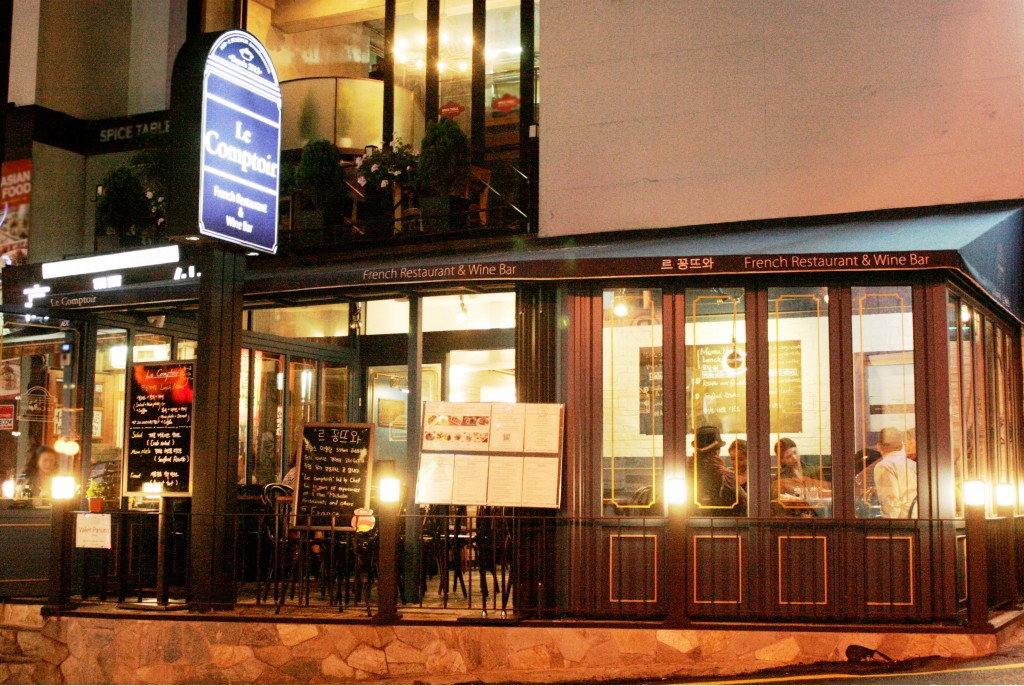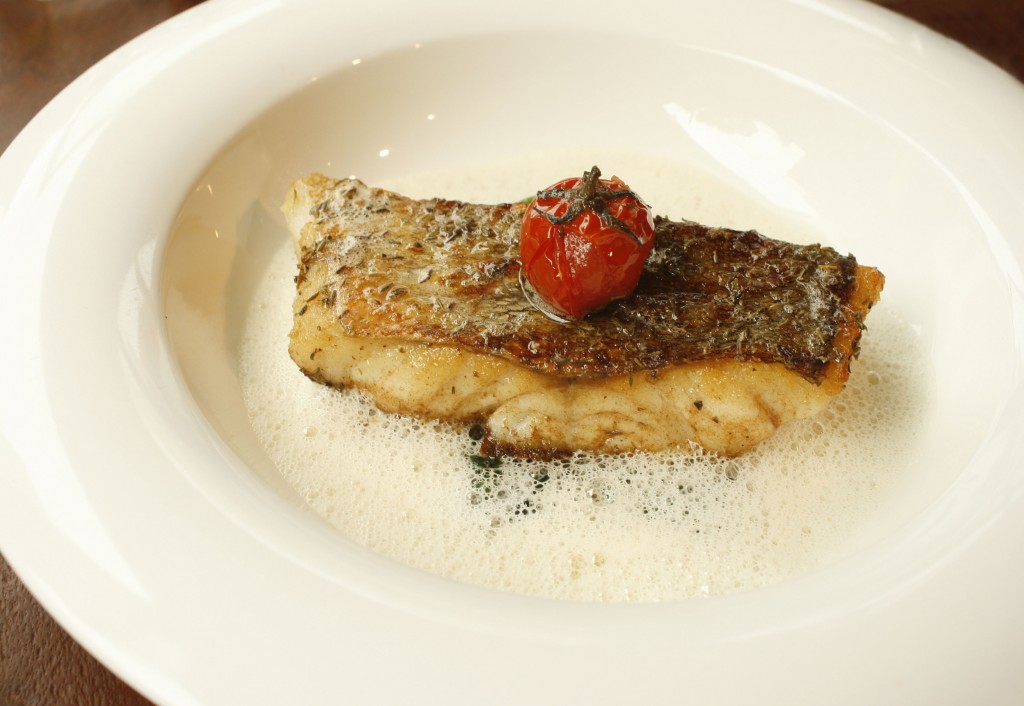By Hal Swindall
On the face of it, few countries could be more dissimilar than Korea and France. The former was historically known as “the Hermit Kingdom,” while the latter has long sought to be as cosmopolitan as possible, albeit putting its own culture first. Paris has striven for centuries to be the global center of art and culture, while only recently has Seoul begun to erect buildings with modern architectural flair and welcome foreigners. Even now, Korea still labors under the image of a xenophobic country, while France celebrates multiculturalism, with immigrants pouring in from its former colonies. Korea, which never had any colonies at all, is by contrast only beginning to welcome ever larger numbers of foreign workers, and still restricts large-scale immigration. Given the gulf between Korea’s rigid Confucianism and relative insularity and France’s inventiveness and expansiveness, one would think that the two nations would not have much to do with each other, and this was generally the case until around the turn of this century.
 This is a good time to take stock of Franco-Korean relations, since last March saw the visit of Fleur Pellerin, a Korean orphan adopted by a French couple and raised in France who rose to become the first Korean-born French minister to set foot in the country. Then on July 25th, the French prime minister Jean-Marc Ayrault, who reportedly likes dancing to Psy’s “Gangnam Style” on his balcony in the evenings, appeared at the Millenium Seoul Hilton alongside Korean officials and presided over the signing of the French-Korean FTA. These two events just months apart mark the highest point in cooperation between the disparate countries, and raise hopes of more Hyundai cars on French highways and Citroens on Korean ones.
This is a good time to take stock of Franco-Korean relations, since last March saw the visit of Fleur Pellerin, a Korean orphan adopted by a French couple and raised in France who rose to become the first Korean-born French minister to set foot in the country. Then on July 25th, the French prime minister Jean-Marc Ayrault, who reportedly likes dancing to Psy’s “Gangnam Style” on his balcony in the evenings, appeared at the Millenium Seoul Hilton alongside Korean officials and presided over the signing of the French-Korean FTA. These two events just months apart mark the highest point in cooperation between the disparate countries, and raise hopes of more Hyundai cars on French highways and Citroens on Korean ones.
France’s involvement with Korea was not always so rosy, however. The first Frenchmen to visit the Land of Morning Calm were Jesuits in the 1600s who disturbed the government by converting many Koreans to Catholicism. The number of converts grew so large that at the end of the next century there was a general crackdown on French missionary activities, and numerous Korean Catholics became martyrs. Despite this setback, the Jesuits kept trying to win souls, and in 1866 the Korean government executed nine French priests and some of their flock. This provoked the invasion of Ganghwa-do off the coast of Seoul by the admiral of the French Pacific fleet, and French naval fusiliers were able to capture some fortresses before retreating in the face of larger Korean forces. The story of this episode is generally forgotten today, but the French-Korean historian Park Byeng-sen wrote a book on it and managed to persuade the French government to return some valuable manuscripts that had been looted.
Despite this shaky start, the two governments established diplomatic relations in 1886, and have maintained them ever since. With the exception of the participation of French troops in the Korean War, however, nothing much happened between the two countries until this century. As of 2011, there were 12,864 Koreans living in France, but half of them were students, with fewer than 2300 being permanent residents; there are twice as many Korean women as men among them. Only about 200 Koreans are married to French, and many of these couples undergo conflict about the rigor of their children’s education. The greatest concentration of French in Korea, on the other hand, is in Seoul’s Seorae Village in Seocho-gu: 560 of them live there. A new French cultural outpost in Korea is the Petite France theme park in Gapyeong County east of Seoul, featuring a Disney-like faux French village that contains an old French cottage that was dismantled and shipped to Korea for reassembly.
The go-to organization for anything to do with Franco-Korean affairs is the French Korean Chamber of Commerce and Industry, which furnishes a wealth of statistics online about the two countries’ import-export balance. It also publishes two guidebooks, one of the new French restaurants appearing around the country, the other on French wines. Of all its publications, these two are perhaps the most revealing about a sea change in the palates of some Koreans. According to Lee Song Whue, Marketing and Communications Project Manager for FKCCI, these days France has a good image in Korea as “very romantic, elegant, chic,” and Koreans “also know that French gastronomy is very special,” with more Korean youth going to France to study it. Before 2000, the number of French restaurants in Korea could be counted  on one hand; Koreans had little interest in foreign fare other than American fast food, and something like duck confit would have been seen as impossibly alien. That is still largely the case, but FKCCI’s the 2014 French Restaurants in Korea guide lists no less than 58 establishments. Although the greatest concentration is naturally in Seoul, they can be found around the country. They are mostly small in both size and menu, but offer cooking utterly different from kimchi and rice.
on one hand; Koreans had little interest in foreign fare other than American fast food, and something like duck confit would have been seen as impossibly alien. That is still largely the case, but FKCCI’s the 2014 French Restaurants in Korea guide lists no less than 58 establishments. Although the greatest concentration is naturally in Seoul, they can be found around the country. They are mostly small in both size and menu, but offer cooking utterly different from kimchi and rice.
At the top end of the chain is Pierre Gagnaire, on the 35th floor of the Lotte Hotel in Seoul. Established in 2008, it was rated the best restaurant in Korea in the 2011/12 Miele Guide, and is run by the first Michelin 3-star chef to come to Korea from France. A representative there to whom I spoke by phone said French food is beginning to take off in Korea, although of course it is still behind Italian in popularity. Furthermore, most Koreans only have a “cliché” idea of French food, such as onion soup and crème brulee. Pierre Gagnaire is changing that, he continued, by offering food hardly any Koreans have heard of before. What Gagnaire offers, therefore, is a “mix between the French spirit and Korean culture” (un mixe entre l’esprit Francais et la culture Coreenne). When I ask him what France’s image is for most Koreans, he immediately responds “De luxe,” adding “quality and lots of good taste” (qualite et beaucoup de gout). According to FKCCI’s guide, Gagnaire’s cooking style is one of “unfailing integrity” in which the flavors of his ingredients are harmonized into a new dimension. With lunch running at 70,000 won, diners must surely expect something exceptional—one wonders if Pierre Gagnaire is not also the most expensive restaurant in Korea, too.
On a simpler and less pricey plane, La Celtique in Sinchon is a good old-fashioned creperie, possibly the only one in this country. Established in 2009 by a Breton named Charles Duval who wants to introduce the cooking of his region to Koreans, this restaurant offers both meal and dessert crepes for around 10,000 won. Breton cider is also available, and the music is all Celtic from around Europe. A better-known French restaurant is Le Saint-Ex, which was founded by a long-term French resident in Itaewon in 2000, making it one of the oldest places for French cuisine in Korea. Situated in the alley behind the Hamilton Hotel, it serves set menus for lunch and dinner that are of high quality at reasonable prices. The mood of the interior is subdued, in sharp contrast to the bustle of the Itaewon strip. Dining there takes you out of Korea, in fact. There are now half a dozen other French restaurants in the Itaewon area, particularly Un Deux Trois just east of the Hamilton Hotel and Le Comptoir around the corner from it. Gangnam, as anyone would expect, has the greatest number of French restaurants of any Seoul district, with nearly twenty.
At the other end of the country, Busan boasts two French restaurants, Tres Bon and Merciel, both of which are flourishing. The former, located in a lane by Gwangalli Beach, was founded in 2011 by a Korean chef named Ham Chungmin who studied cooking and wine in France and worked at some four-star hotels. It seats less than twenty and has a small menu, but offers standard French dishes like lamb chops and Alsatian chicken, as well as fabulous sandwiches. Perhaps because he caters to a different demographic, Chef Ham declares that French food is not becoming more popular here because “Korean culture needs more time” to appreciate it, and most Koreans still associate Western food with fast food; they associate France with art and wine and fancy food, but do not feel much affinity for it. Hence, most of his Korean customers are those who have resided abroad. As for Merciel, a fancier option atop Dalmaji Hill by Haeundae Beach, it is in fact two restaurants: a formal haute cuisine place with set menus on the ground floor, and a casual brasserie with a wide variety of salads and pasta on the second floor. Views of the sea and sky—mer and ciel in French—are spectacular. The chef, who is a nephew of the former Korean ambassador to France, also studied and worked for a long time in that country.
But Seoul and Busan are the largest cities in the country—what about provincial cities? Surprisingly, even Daegu, perhaps Korea’s most provincial provincial capital, has a little gem of a French restaurant named Minou offering sets for at least two people. Tucked away in a back alley in Nam-gu, its main claim to such fame as it has is its Korean-style bouillabaisse, a variant on the Marseillais seafood stew that uses local species of fish and saffron. It has to be tasted to be believed. Yet of all the unlikely places to find a French restaurant in Korea, perhaps the most unusual is The White Christmas in Chungju, a city in landlocked Chungbuk-do. Opened in 2001, its famous female chef Kim Heegyeom has been praised by restaurant guides for her cooking.  Judging from the FKCCI guidebook’s description, the décor is just as distinguished: the paintings and furniture are all over one hundred years old, creating an atmosphere of the nineteenth century. Entering this restaurant, furthermore, “is like opening a secret door.” It almost seems worth a trip to Chungju just to eat there, although sets start at 75,000 won.
Judging from the FKCCI guidebook’s description, the décor is just as distinguished: the paintings and furniture are all over one hundred years old, creating an atmosphere of the nineteenth century. Entering this restaurant, furthermore, “is like opening a secret door.” It almost seems worth a trip to Chungju just to eat there, although sets start at 75,000 won.
If it seems too much bother and expense to go to any of these new French restaurants, you can find solace in FKCCI’s Seoul Wine Guide, in which Korean sommeliers match French wines to twenty French dishes and twenty Korean ones. If you have ever wondered what would go well with bibimbap, FKCCI recommends either a Joseph Perrier chardonnay or a Chateau Bonnet sauvignon blanc. If those seem a little elaborate for Korea’s most basic dish, then there are also entries for tofu, galbijjim and bulgogi. Although matching French wines with Korean cooking might seem inappropriate at first, you might pleasantly surprise Koreans who invite you over for dinner by bringing a bottle of French wine along—it might make the evening more interesting.
In conclusion, French relations with Korea are higher than they have ever been, but they are still minuscule compared to Korea’s relations with other countries. To most French, Japan is the Asian country with the most fascinating culture, while China has the greatest economy; Korea is merely a petit pays in between that receives little notice. Given France’s present economic predicament, however, which requires it to trade as much as it can with every country it can, that may change. Meanwhile, Korea might become more receptive to things French, especially its cuisine.
Anyone wanting to order a copy of one of FKCCI’s guides can contact Ms. Lee (sw.lee@fkcci.com). Bon appétit!
All photos from FKCCI.
________________________________________________ Hal Swindall is a native Californian who received his PhD in Comparative Literature from UC Riverside in 1994 and has wandered around East Asia as a vagabond prof ever since. His dissertation was on late 19th-century European novels, but he has developed new interests in oriental societies, especially their educational systems. He teaches composition and literature courses at Pusan National University’s Department of Global Studies, and is working with a Chinese colleague on a scholarly article about the forgotten Shanghai poet Shao Xunmei.
Hal Swindall is a native Californian who received his PhD in Comparative Literature from UC Riverside in 1994 and has wandered around East Asia as a vagabond prof ever since. His dissertation was on late 19th-century European novels, but he has developed new interests in oriental societies, especially their educational systems. He teaches composition and literature courses at Pusan National University’s Department of Global Studies, and is working with a Chinese colleague on a scholarly article about the forgotten Shanghai poet Shao Xunmei.
His email is paneurasia@gmail.com.
Note: There is a print link embedded within this post, please visit this post to print it.Before 2000, the number of French restaurants in Korea could be counted on one hand; Koreans had little interest in foreign fare other than American fast food, and something like duck confit would have been seen as impossibly alien. That is still largely the case, but FKCCI’s the 2014 French Restaurants in Korea guide lists no less than 58 establishments. Although the greatest concentration is naturally in Seoul, they can be found around the country. They are mostly small in both size and menu, but offer cooking utterly different from kimchi and rice.